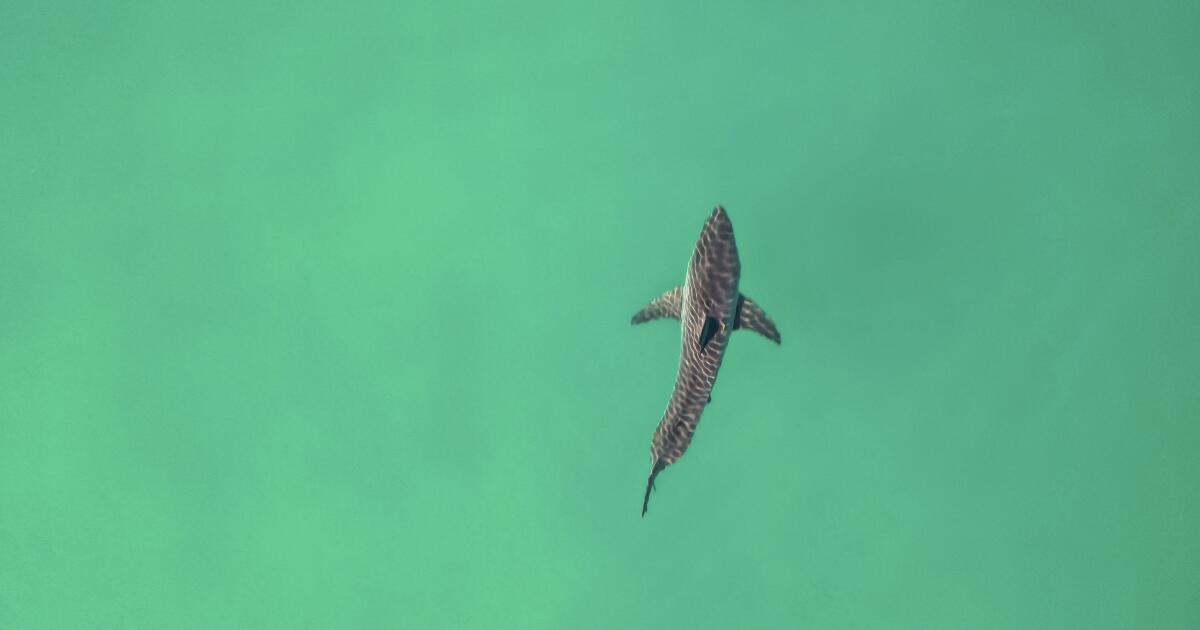
In waters just outside of San Diego, a shiver of juvenile white sharks has established a nursery, swimming below surfers, paddleboarders and others, usually unnoticed.
In October, Jack Elstner, a doctoral student at UCSD’s Scripps Institution of Oceanography and lead field technician for the San Diego sector, partnered with three researchers from Cal State Long Beach’s Shark Lab to tag the world’s largest predatory fish and find out why they have chosen the area as their nursery.
Shark Lab has been studying the fish since 1966 — learning about their behaviors, ecology and physiology and easing the public’s fears. Their efforts include research, educational programs and comic books as an outreach to children. They’ve also worked with a psychologist to understand public perception and an eco-tourism expert and an economist to examine the negative and positive impacts of having the sharks in a populated coastline, said Chris Lowe, a professor of marine biology at Cal State Long Beach and the director of Shark Lab who started with the program as a grad student in the late 1980s.
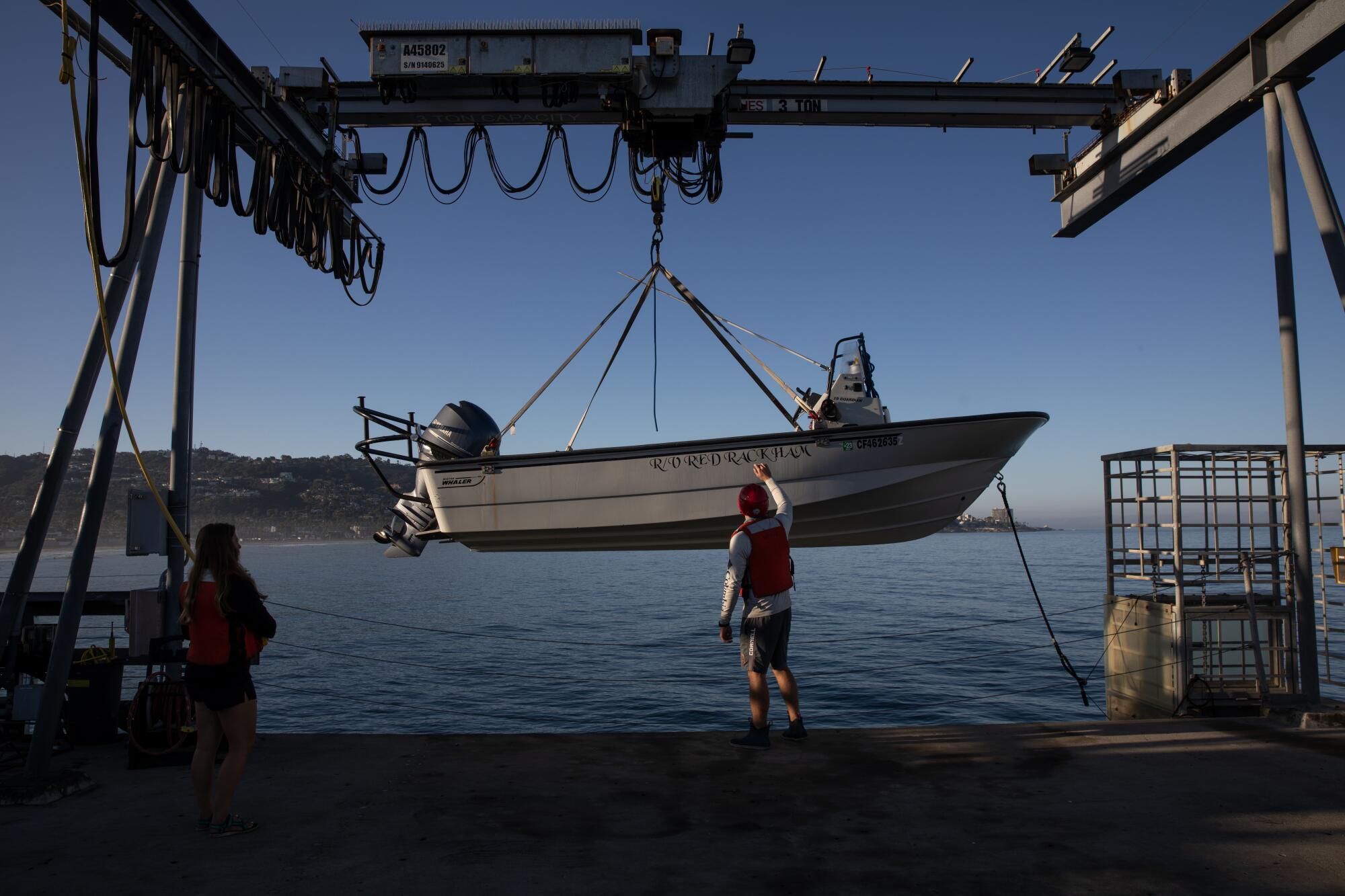
Jack Elstner, a doctoral student at UC San Diego’s Scripps Institution of Oceanography and lead field technician for the San Diego sector, lowers a boat into the water before he and three researchers from Cal State Long Beach’s Shark Lab travel to a nursery of juvenile white sharks in hopes of tagging the large fish on Oct. 6, 2023.
(Ana Ramirez/The San Diego Union-Tribune)
The group’s founder, Dr. Donald Nelson, was one of the first to deploy acoustic telemetry with sharks — a method that involves tagging an animal and using sound to gather information. The data is then collected as the animal passes through a tracking station known as receivers. This technology, first used in the mid-1960s, is still used today.
In 2018, the lab co-authored Assembly Bill 2191, officially known as the White Shark Population Monitoring and Beach Safety Program. The state gave the program $3.75 million to look into the increase in white sharks along the California coastline. The funding is set to run out in June of 2024, which would likely end the program unless the state decides to continue funding it, Lowe said.
There are still many unknowns that researchers are hoping to learn or experience, such as mating behavior and seeing a live birth. Elstner is conducting his own research looking at “fine-scale patterns of juvenile white shark habitat” to try and understand how sharks move throughout the habitats in San Diego nurseries.
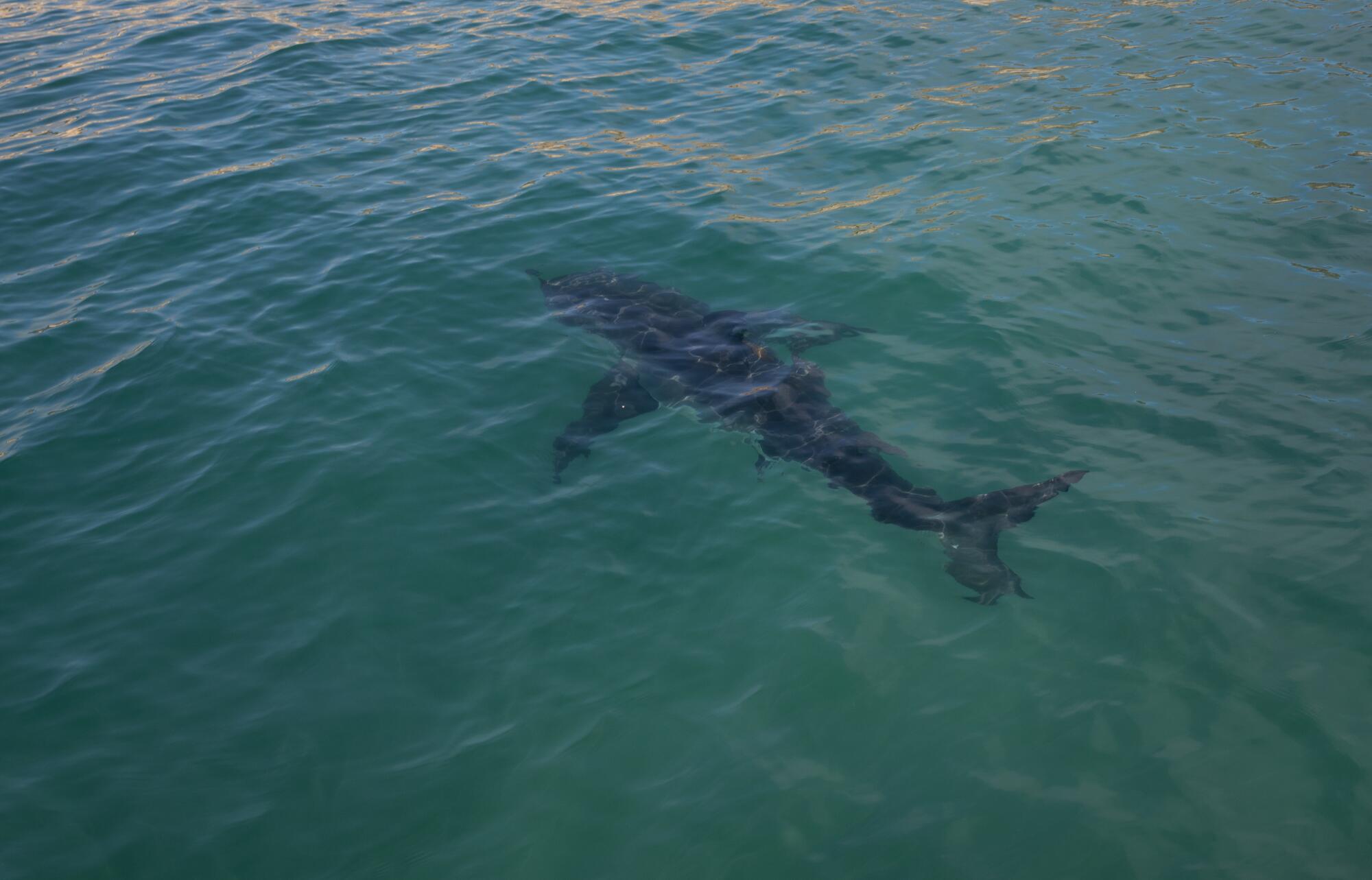
A juvenile white shark swims in Torrey Pines on Oct. 6, 2023.
(Ana Ramirez/The San Diego Union-Tribune)
“We can understand when it’s showing up at a certain time of day, or more importantly, when it’s not there. And then also, there are those geo positions that we calculate,” he said. “We’re hoping to calculate tracks of where the animal moves through space and time.”
From that data, they can have a better idea of why the sharks are spending time there and whether they’re staying for a long period of time or just temporarily foraging. Having such information and research helps with conservation management.
There are seven nursery “hot spots” along Southern California. Torrey Pines and Del Mar are the largest, with about 25 unique sharks spotted in a given week, and Carpinteria being the second, averaging 11. However, Carpinteria has been recorded as having as many as 40 in one day. Nurseries tend to last for a year or up to five years, Lowe said.
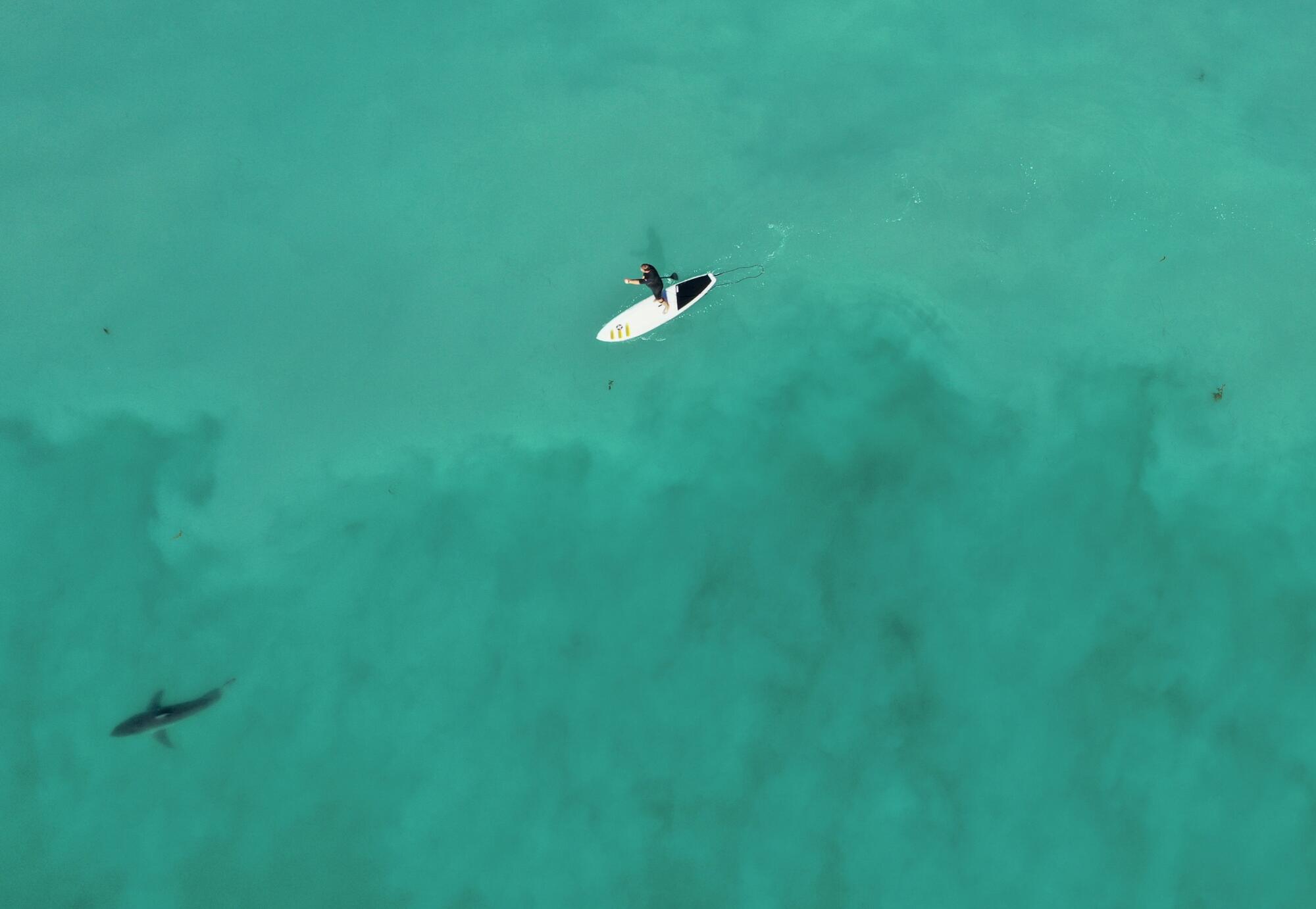
A juvenile white shark swims beneath a paddle boarder outside of Torrey Pines on Oct. 31, 2023.
(Ana Ramirez/The San Diego Union-Tribune)
Lowe and his team have been studying these “hot spots” for a decade.
“We see these places that are hot spots go cold and then a new hot spot emerges. And that’s something we don’t fully understand yet,” he said, adding as a reason why continued monitoring is important. “That’s one of our big goals … to try to figure out if we can predict where the next hot spot will be and what will cause a previous hot spot to go cold.”
Some of the theories include the sharks eating all the available food in the area or a change in environmental conditions.

Felicity Eriksson, an education coordinator and lab assistant at Shark Lab, spots a white shark while flying a drone on Oct. 6, 2023. Eriksson spotted six sharks that day, and all but one had already been tagged. Eriksson’s job that day was to find the sharks and alert the crew so they could identify the sex of the shark by using a dip camera and to tag the individual.
(Ana Ramirez/The San Diego Union-Tribune)
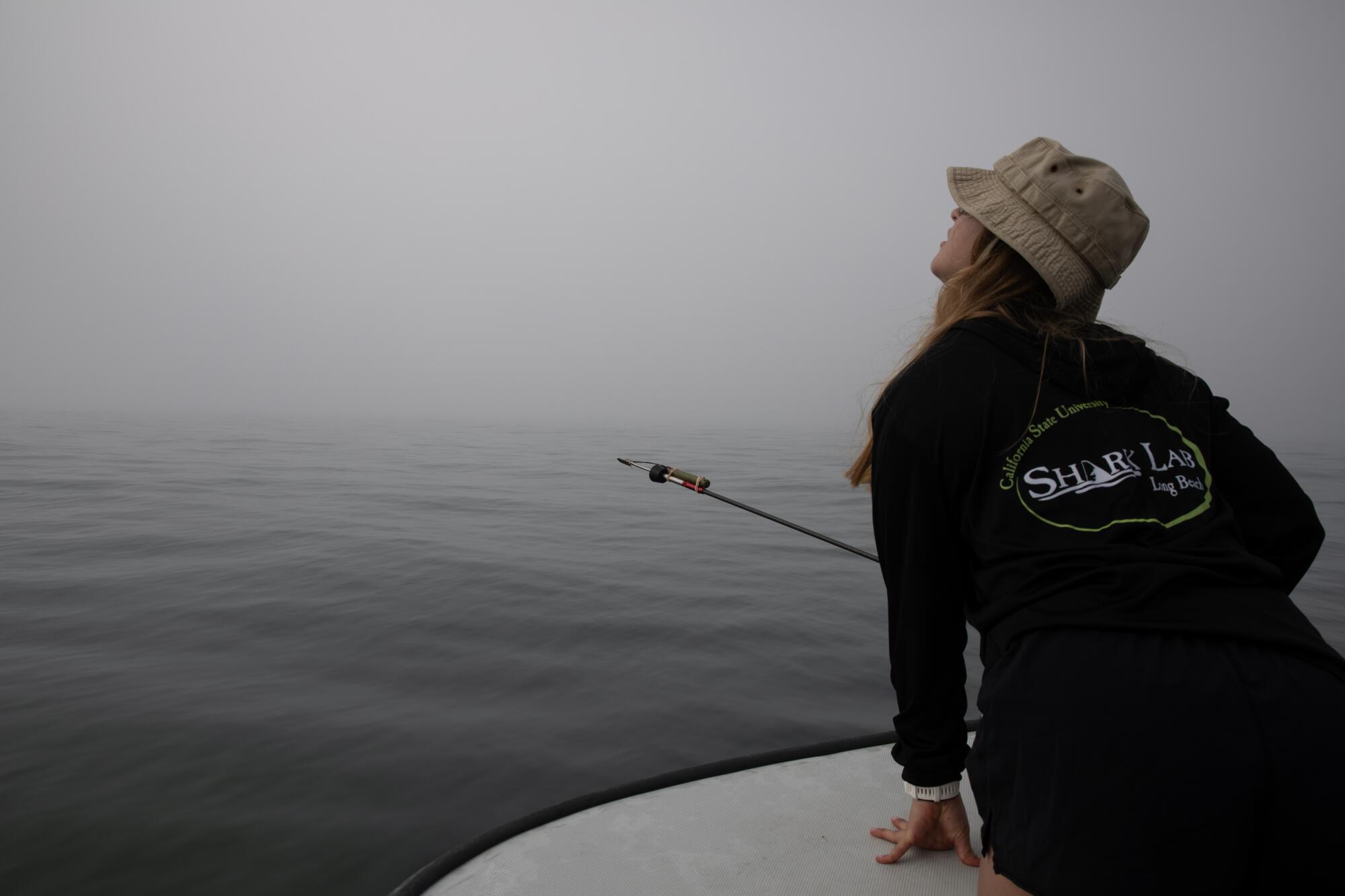
Elizabeth Jahn, a graduate student at Shark Lab, prepares to tag a female white shark on Oct. 6, 2023. The lab has tagged about 40 sharks this year.
(Ana Ramirez/The San Diego Union-Tribune)
The search
The team leaves the Ellen Browning Scripps Memorial Pier early morning, when the light is still golden, to spend the day searching for the 6-foot-plus shadowy figures swimming beneath.
Upon arriving at the destination of study, the team uses a drone to spot the location of the sharks. If the fish had already been tagged, there was nothing to do other than observe.
“There’s a lot of sharks in the area,” said Ryan Logan, a postdoctoral fellow at Shark Lab. “The problem is that we’ve already done our job pretty well the previous times we’ve been out here. So we’ve got a lot of them tagged already.”
The lab has tagged about 40 sharks this year, including nearly a dozen in the San Diego area.
When the researchers came across an untagged shark, it took several attempts of using a dip camera to identify the sex of the skittish fish. After confirming the sex, they set off to tag her.
Two paddle boarders and a kayaker began to approach the boat, interested in what they were doing. One of the researchers asked the rowers to stay back because they were attempting to tag a shark underneath them. As one of the paddle boarders was leaving, he asked, “Are we safe?”
Logan confidently replied: “Yes.”
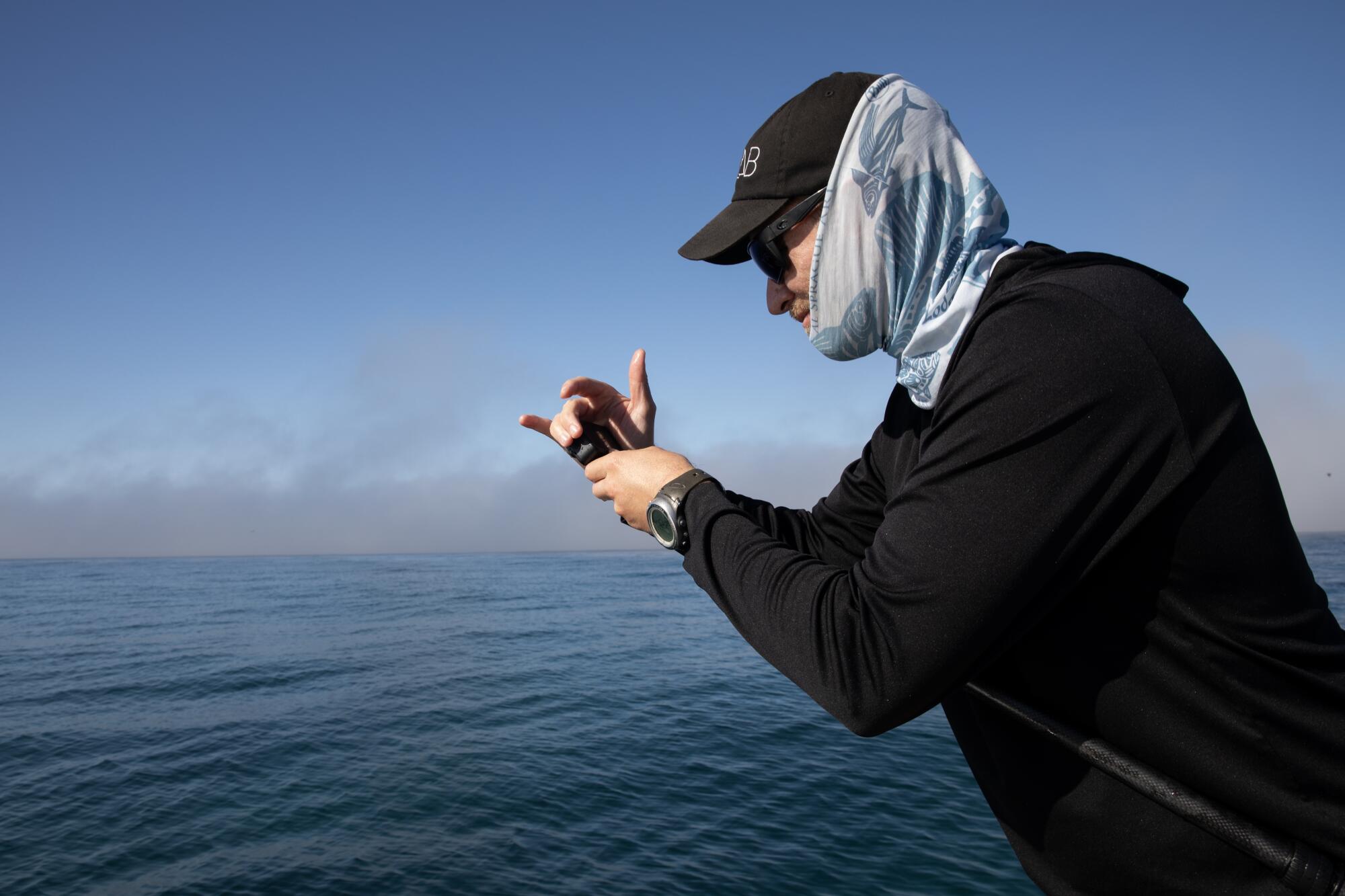
Ryan Logan, a postdoctoral fellow at Shark Lab, reviews footage from a dip camera after trying to identify the sex of a white shark on Oct. 6, 2023. It took the team several attempts to get useful video that would reveal the shark as female.
(Ana Ramirez/The San Diego Union-Tribune)
At this age, the sharks tend to munch on stingrays and other small marine animals, so people don’t need to be concerned. Sharks, being predators, are curious by nature and often investigate something that is new to them, Logan said.
“If you’re an animal and you come across something you haven’t come across before, chances are you’re going to try and see if it’s edible,” Logan said. “And for these sharks, the only way to do that is to actually bite it, and so a lot of what you get with these bites on humans is a bite and then a release.”
He continued: “If a 10-to 12-foot shark actually wanted to take a human, it would have no problem doing that. So you would have a ton of people dying constantly if these sharks were after people.”
A list of shark incidents cataloged by the California Department of Fish and Wildlife since October 1950 until October 2023 documents that there have been 16 shark-related deaths in the state. Since 2019, there have been three deaths, one in Southern California. Overall, the incidents reported since 2019 were considered minor. Two major incidents were reported in Southern California, including one in Del Mar in 2022, when a woman’s leg was bitten.
“It’s really important that we know what’s going on in terms of the coastal waters, that we have the ability to educate people that are coming here from all over the world so that people can be safe, sharks can be safe.”
— Chris Lowe, a professor of marine biology at Cal State Long Beach and the director of Shark Lab
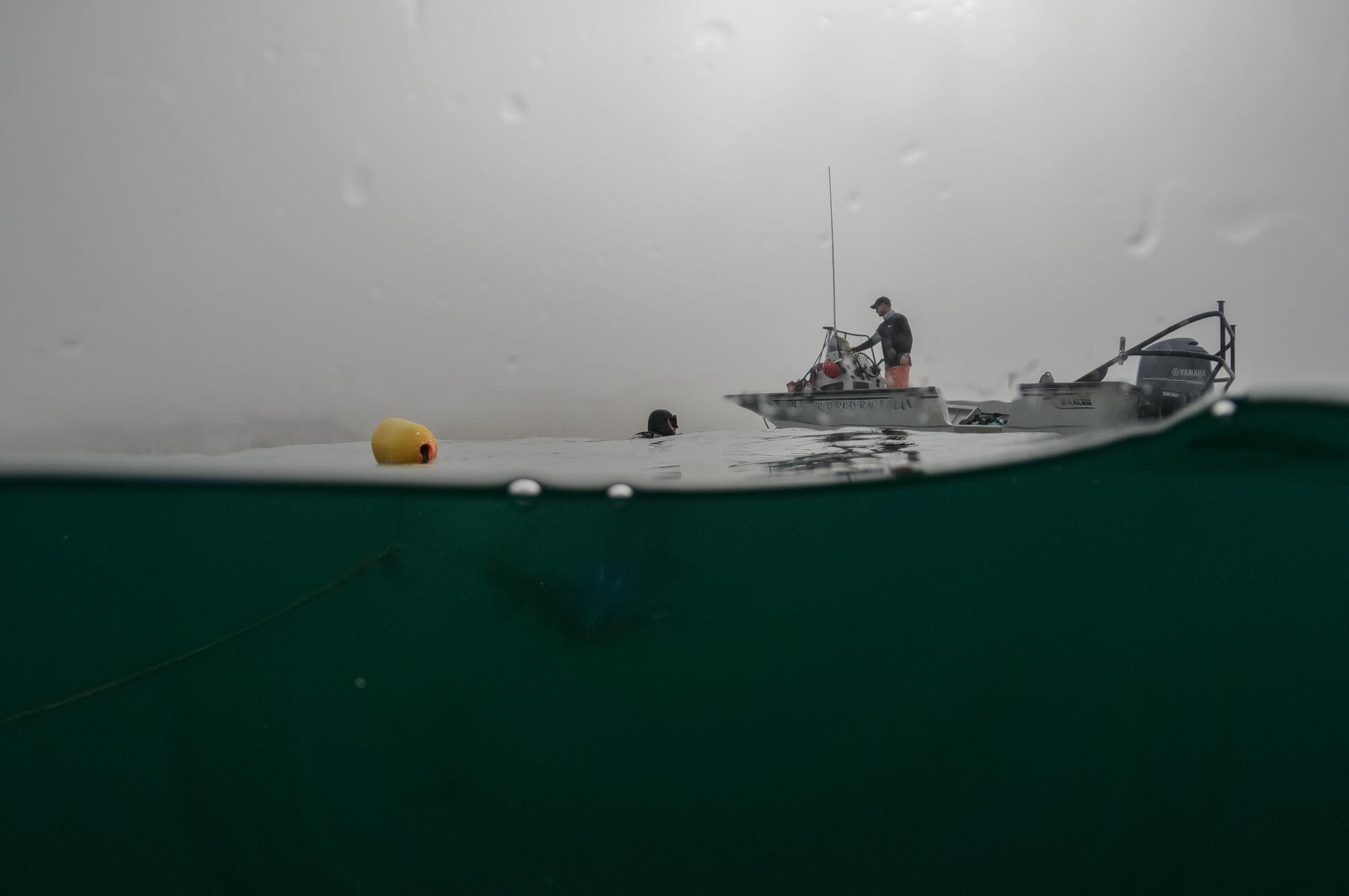
Jack Elstner gathers detection data from a receiver on Oct. 6, 2023. There are a total of 45 receivers floating between Black’s Beach and Del Mar that are 500 meters apart from each other. The researchers collect the data about once a month to see the number of tagged sharks that have passed through the area.
(Ana Ramirez/The San Diego Union-Tribune)
After tagging, the team continued its workday by diving and collecting detection data from several receivers located between Black’s Beach and Del Mar. There are a total of 45 receivers floating in the area — all 500 meters apart from each other. They collect the data about once a month to see the number of tagged sharks that have passed through the area and how many times. The receiver also records the tag ID and the time the incident occurred.
In general, the number of white sharks have increased since they were protected in California in 1994, the same year gill nets were banned in near-coastal waters in the state. White sharks have had a drastic comeback since the population was decimated by overfishing in the 1970s. But this doesn’t mean they’re in the clear for becoming extinct. According to the World Wide Fund for Nature, they are still at risk because they’re still being hunted for their fins and teeth and are bycatch, a term used for undesired fish or sea life caught in commercial fishing operations.
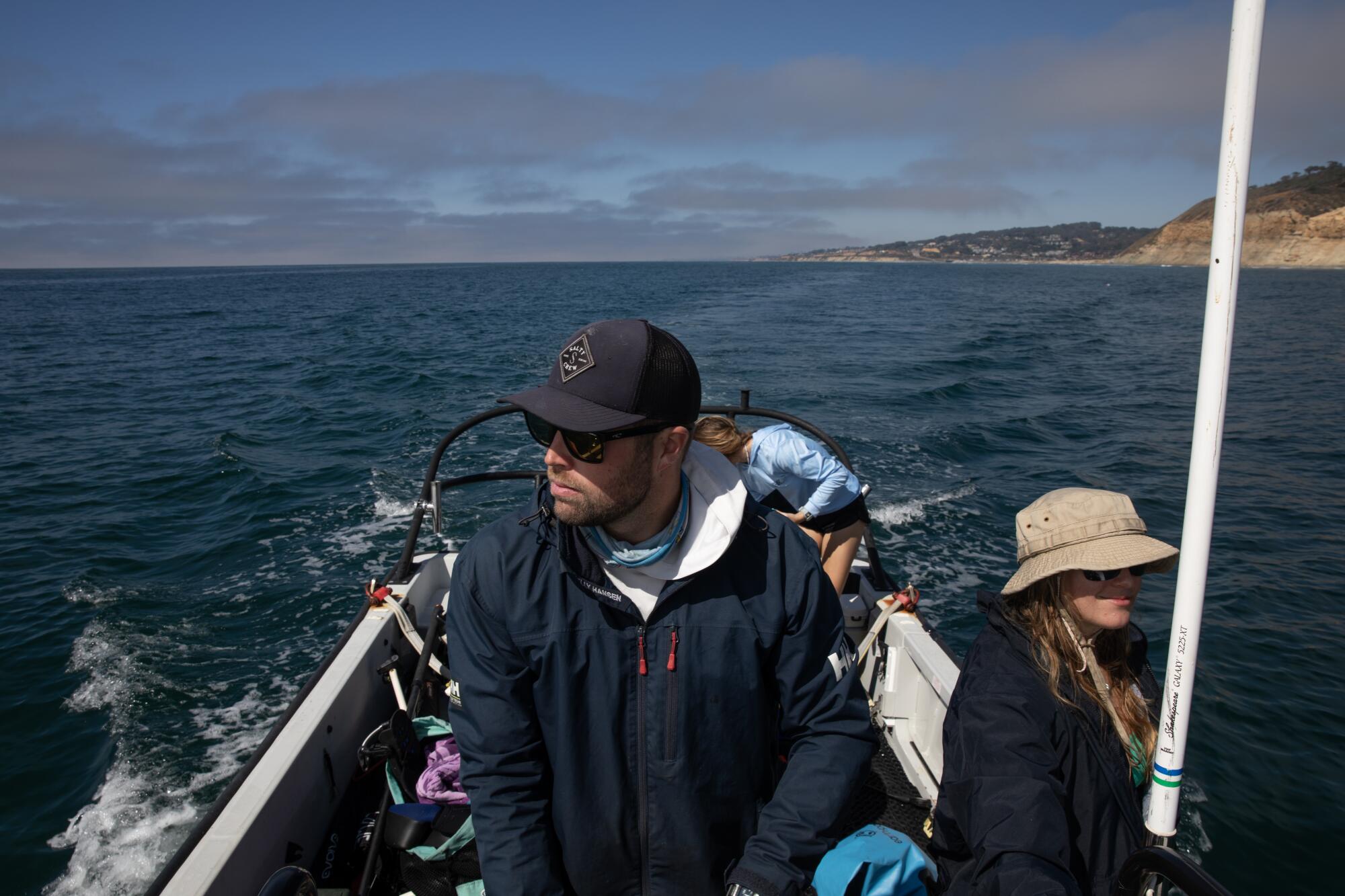
Jack Elstner drives Elizabeth Jahn, a graduate student at Shark Lab (left) and the rest of the crew back to Scripps Pier after tagging and retrieving data on Oct. 6, 2023.
(Ana Ramirez/The San Diego Union-Tribune)
Natural balance
Researchers, including Lowe, stress the importance of predators. Without predators, there would be an ecological balance shift and some animals — sea lions, for example — could become overpopulated.
“That means they are going to be more susceptible to disease,” Lowe said. “By having predators like white sharks — one of the few things that will eat marine mammals — we can keep the population at healthy levels. That’s the role usually of a predator in an environment.”
Lowe is asking legislators to back the funding to continue the program. He said the program is unique to California in the sense that they share the data with the public so they can evaluate their own safety.
Even though researchers may not have all of the answers, they’re working to find them.
“It’s really important that we know what’s going on in terms of the coastal waters, that we have the ability to educate people that are coming here from all over the world so that people can be safe, sharks can be safe,” he said.
There were a total of six sharks spotted that day — two even breaching the water. The crew left satisfied despite having missed tagging the female shark. They now have valuable new data to sift through, which will help their efforts to better explain why white sharks swim among us, often unseen.

A juvenile white shark swims outside of Torrey Pines on Oct. 31, 2023.
(Ana Ramirez/The San Diego Union-Tribune)







